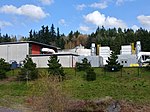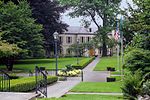Maltby, Washington
AC with 0 elementsCensus-designated places in Snohomish County, WashingtonCensus-designated places in Washington (state)Use mdy dates from April 2020

Maltby is a census-designated place (CDP) in Snohomish County, Washington. The population was 10,830 at the 2010 census.
Excerpt from the Wikipedia article Maltby, Washington (License: CC BY-SA 3.0, Authors, Images).Maltby, Washington
212th Street Southeast,
Geographical coordinates (GPS) Address Nearby Places Show on map
Geographical coordinates (GPS)
| Latitude | Longitude |
|---|---|
| N 47.802222222222 ° | E -122.10416666667 ° |
Address
Maltby Elementrary School
212th Street Southeast 9700
98296
Washington, United States
Open on Google Maps





